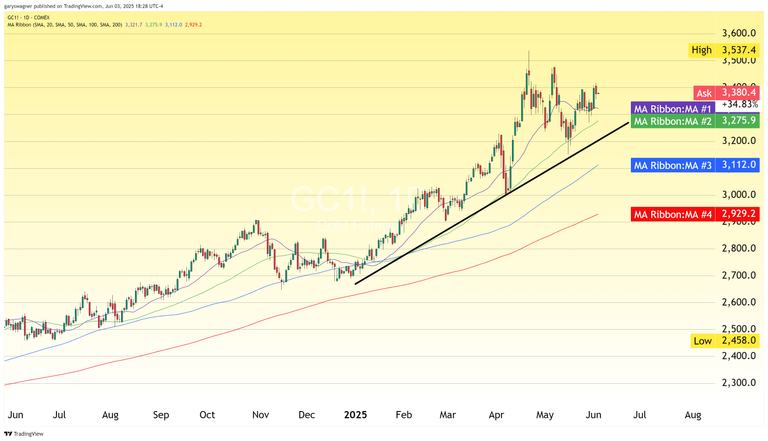Gold prices experienced a notable pullback today, declining approximately $29 or 0.85%, as investors took profits following Monday's substantial $93.30 rally. The precious metal's retreat coincided with a recovery in the U.S. dollar index, which climbed 0.58% from its lowest levels since mid-April, creating headwinds for dollar-denominated commodities.

The dollar's strength appears counterintuitive given recent developments in trade policy and mounting concerns about U.S. economic performance. The Organization for Economic Cooperation and Development has substantially revised its U.S. economic growth projections for 2025, lowering its forecast to 1.6% from a previous estimate of 2.2%. The Paris-based organization cited evolving trade policy dynamics and their anticipated effects on import volumes as key factors behind the downward revision. Concurrently, the OECD reduced its global economic growth forecast for 2025 to 2.9%, marking a decrease from its prior 3.1% projection, reflecting broader concerns about international economic momentum.
Manufacturing data released today reinforced these growth concerns, with factory orders plummeting 3.7% in April, far exceeding analyst estimates. The decline appears linked to the existing 25% tariffs on steel and aluminum, which have begun to weigh on industrial activity. With these tariffs scheduled to double tomorrow, further pressure on the manufacturing sector appears likely, potentially amplifying the economic headwinds already evident in the data.
Despite these manufacturing challenges, labor market indicators continue to demonstrate resilience. April JOLTs data revealed job openings climbed to 7.39 million, exceeding both the revised March figure of 7.2 million and economist expectations of 7.1 million. The unexpected increase underscores persistent strength in U.S. labor demand, with employers continuing to seek workers at elevated levels despite broader economic uncertainties.
The robust employment data likely contributed to today's dollar strength, alongside growing market consensus regarding Federal Reserve policy. Futures markets now assign only a 1.2% probability to a rate cut at the upcoming June 18th FOMC meeting, according to the CME's FedWatch tool. This represents a sharp decline from 3.8% on May 30th and 34% on May 2nd, reflecting traders' increasing conviction that the central bank will maintain its current monetary stance.
The overwhelming expectation that the Federal Reserve will keep interest rates elevated for an extended period proved sufficient to overcome concerns about deteriorating trade relationships and slowing global growth. However, this dynamic may prove temporary. As the impact of doubled steel and aluminum tariffs becomes apparent and trade uncertainties intensify, the prevailing trend toward dollar weakness and safe-haven demand for assets like gold is likely to reassert itself in the coming sessions.
Wishing you, as always, good trading,

